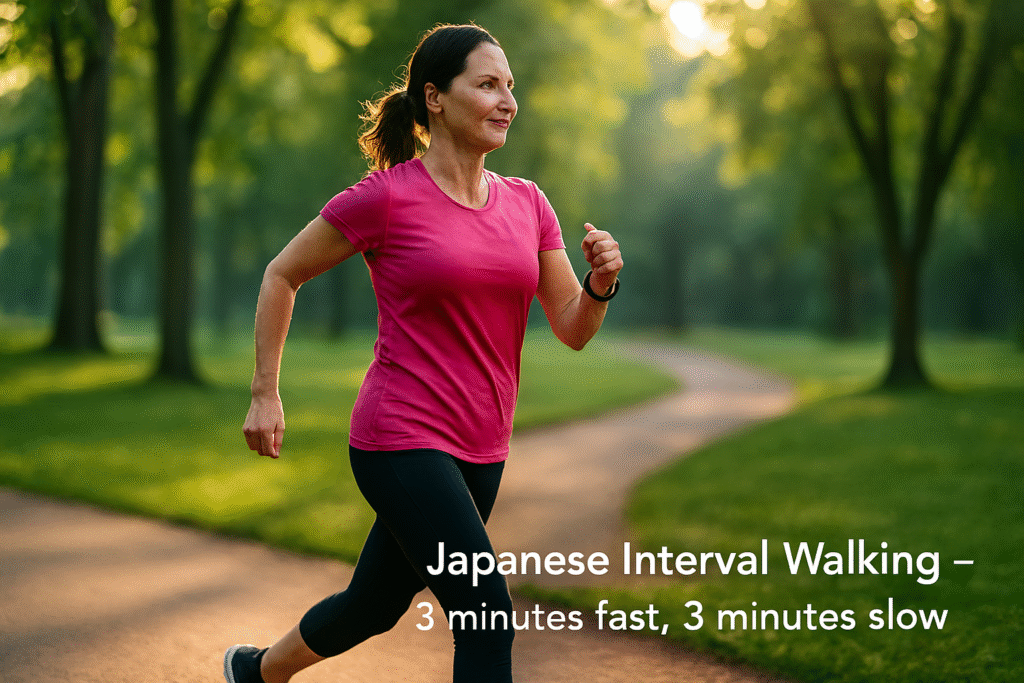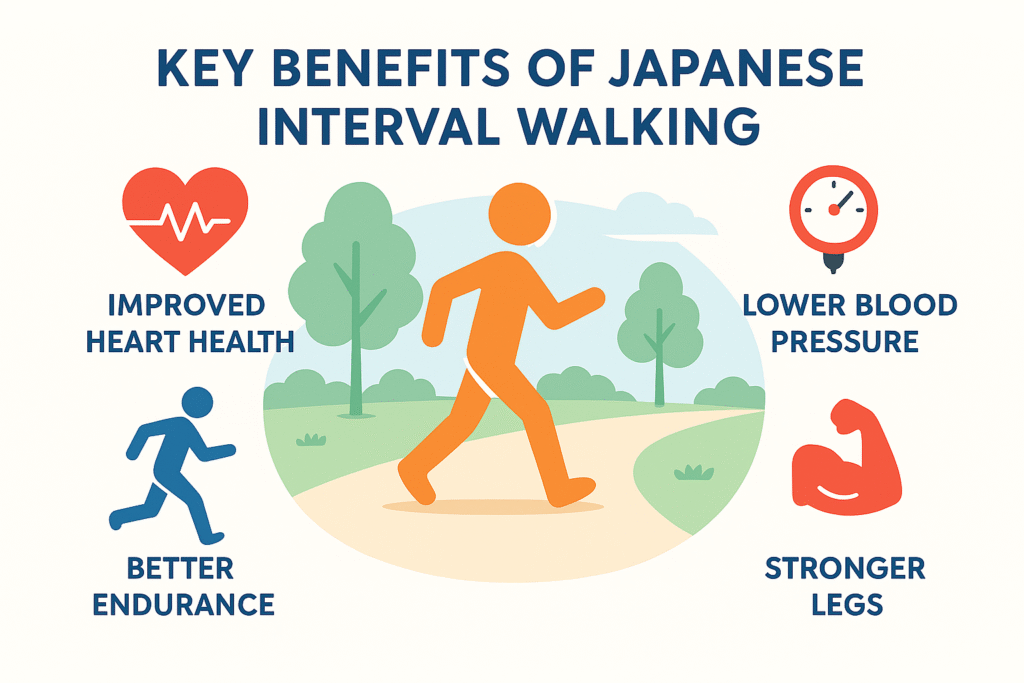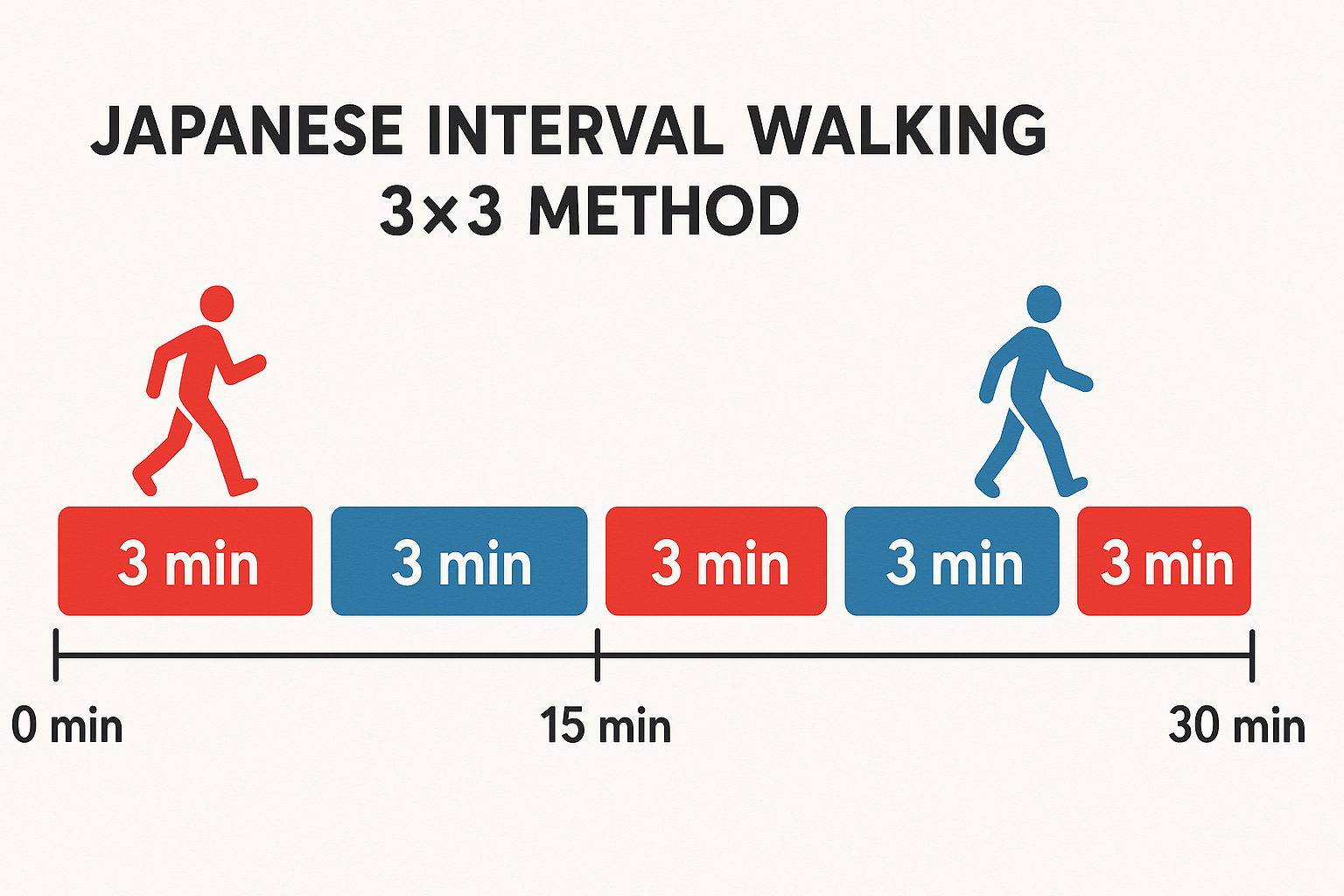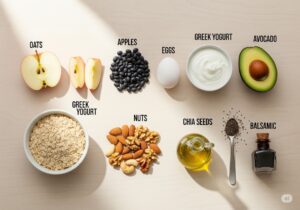
Woman briskly walking in a park, showing Japanese Interval Walking
Japanese Interval Walking (IWT) is a time-efficient walking routine that alternates three minutes of fast walking and three minutes of slow walking. Learn how to do the 3×3 method, the proven health benefits, safety tips, and a sample 30-minute plan. Evidence-based and easy to follow.
What is Japanese Interval Walking? A Quick Overview
Japanese Interval Walking — often called Interval Walking Training (IWT) or the “3×3” method — is a structured walking program developed by Japanese researchers. The routine alternates 3 minutes of fast-paced walking (about 70% of peak walking intensity) with 3 minutes of slower recovery walking (about 40% of peak walking intensity) and is usually performed for 30 minutes per session, about 4 times per week. This alternating pattern gives the cardiovascular and metabolic benefits of higher-intensity exercise while keeping impact and complexity low. (TIME, Real Simple)
Where Did It Come From?
IWT was developed and studied by Japanese exercise scientists over the last two decades. Clinical and community trials in Japan tested IWT among older adults and people with cardiometabolic risk, finding meaningful improvements in fitness and health markers compared with continuous moderate walking. The method’s recent viral spread on social platforms repackaged these scientific findings into a simple, repeatable routine that’s easy to try. (PubMed, The Washington Post)
Proven Health Benefits of Japanese Interval Walking

- Improves aerobic fitness and VO₂ max. Studies report greater increases in aerobic capacity after IWT compared with steady, moderate walking. (PubMed)
- Lowers blood pressure and improves cardiometabolic markers. Trials showed reductions in systolic and diastolic BP and improvements in BMI, cholesterol, and glucose control in some populations. (Canadian Science Publishing, The Washington Post)
- Helps with blood-sugar control for people with type 2 diabetes. Research suggests IWT can improve glycemic control — possibly by improving glucose effectiveness — in people with T2D. (PubMed)
- Builds leg strength and functional fitness. The brisk intervals tax muscles more than gentle walking, boosting strength and daily-function capacity in older adults. (PubMed)
These benefits make IWT a practical, lower-impact alternative to running or formal HIIT, especially helpful for older adults or those with joint concerns. That said, experts remind us viral trends sometimes oversimplify details, so follow safe progression and seek medical advice where appropriate. (The Guardian, Los Angeles Times)
How to Do Japanese Interval Walking — Step-by-Step
- Warm up (3–5 minutes): Easy walking + gentle leg mobility.
- Start the 3×3 cycle:
- 3 minutes fast walking — brisk enough that talking is somewhat difficult (≈70% of effort).
- 3 minutes slow walking — recovery pace, breathe easily (≈40% of effort).
- Repeat the 3+3 blocks until you reach ~30 minutes total (about 5 cycles).
- Cool down (3–5 minutes): Slow walk and light stretching.
- Frequency: Aim for 3–5 sessions weekly; many studies used 4×/week to show clear benefits. (Real Simple, The Washington Post)
Practical tips: use a timer or interval app, mark intervals with 3-minute songs, and pick a flat, safe route. If you’re new to exercise, start with fewer cycles or shorter fast intervals and build up.
Who Benefits Most — And Who Should Be Cautious?
Good candidates: older adults, beginners who want HIIT-like benefits without running, people with mild hypertension or prediabetes looking for an achievable program. (PubMed)
Be cautious if you have: unstable cardiovascular disease, uncontrolled high blood pressure, recent surgery, severe joint problems, or other medical conditions. Always check with your healthcare provider before starting a new exercise program if you have health concerns. Experts also warn viral versions may omit individualization; adapt intensity and frequency to your fitness level. (The Washington Post, Los Angeles Times)
Sample 30-Minute Japanese Interval Walking Session

- 0–5 min: warm-up (easy walk)
- 5–8 min: fast walk (3 min)
- 8–11 min: slow walk (3 min)
- 11–14 min: fast walk (3 min)
- 14–17 min: slow walk (3 min)
- 17–20 min: fast walk (3 min)
- 20–23 min: slow walk (3 min)
- 23–26 min: fast walk (3 min)
- 26–29 min: slow walk (3 min)
- 29–32 min: cool down (easy walk + stretch)
If 32 minutes is too much on day 1, reduce to 2–3 cycles and add cycles over 2–4 weeks.
Safety & Progression Tips
- Wear supportive shoes, choose even surfaces, and hydrate. Reem
- If you feel chest pain, dizziness, or unusual shortness of breath, stop and seek medical care.
- Gradually increase intensity: add more fast intervals or speed up the fast segments before increasing total time.
Short FAQ
Q: Is this just brisk walking?
A: No — the alternating intensities create a stronger cardiovascular stimulus than continuous brisk walking and show superior benefits in several trials. (PubMed)
Q: Can I replace running with it?
A: For many people, yes. It has lower impact and can offer similar improvements in fitness without the same joint stress.
Medical disclaimer
This article is for educational purposes only and does not replace medical advice. Consult a healthcare professional before beginning any new exercise, especially if you have chronic health conditions, are pregnant, or have recently had surgery.
Call to action
Ready to try Japanese Interval Walking? Start with two cycles this week and share your experience. Join our community newsletter for weekly walking plans, interval playlists, and tips for staying consistent.





